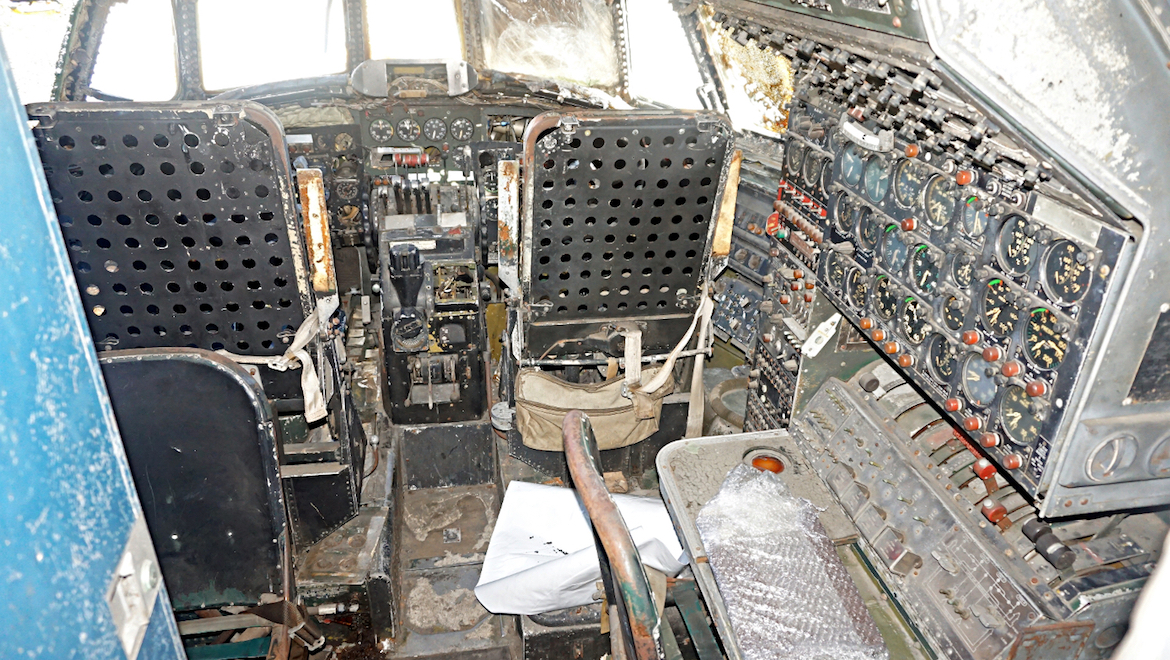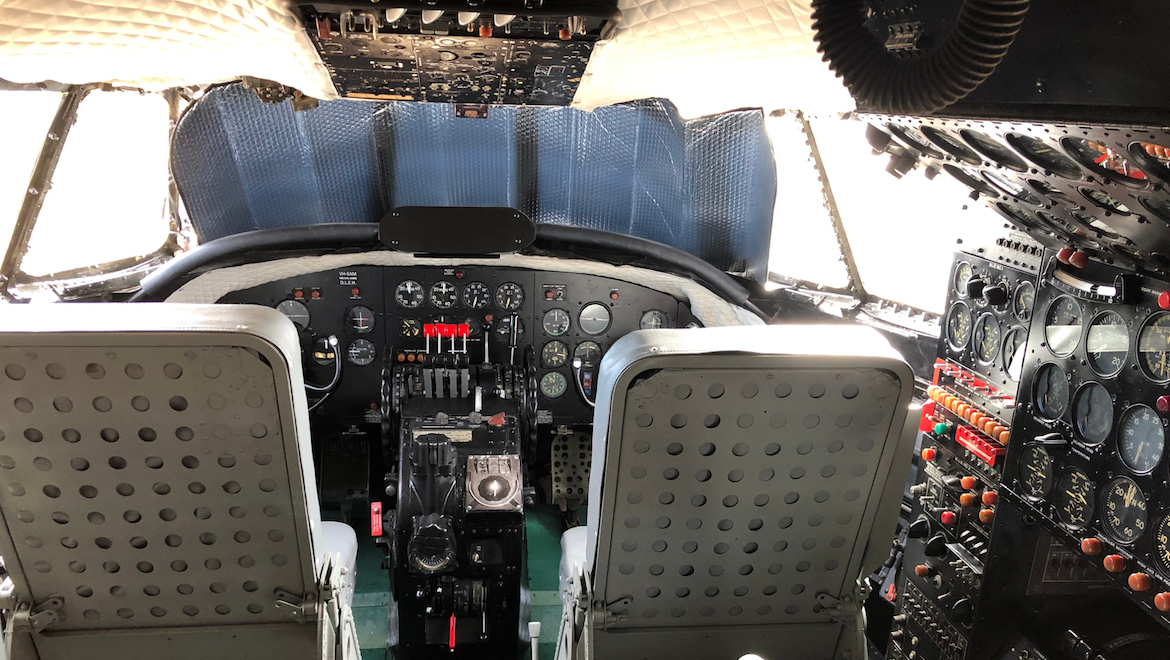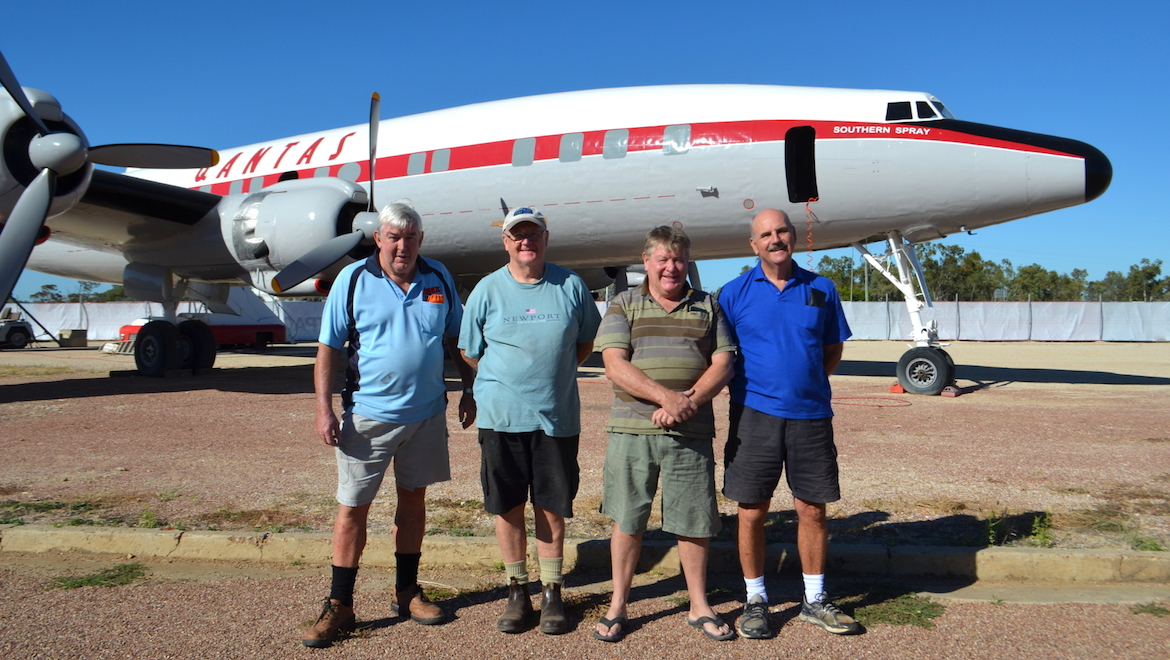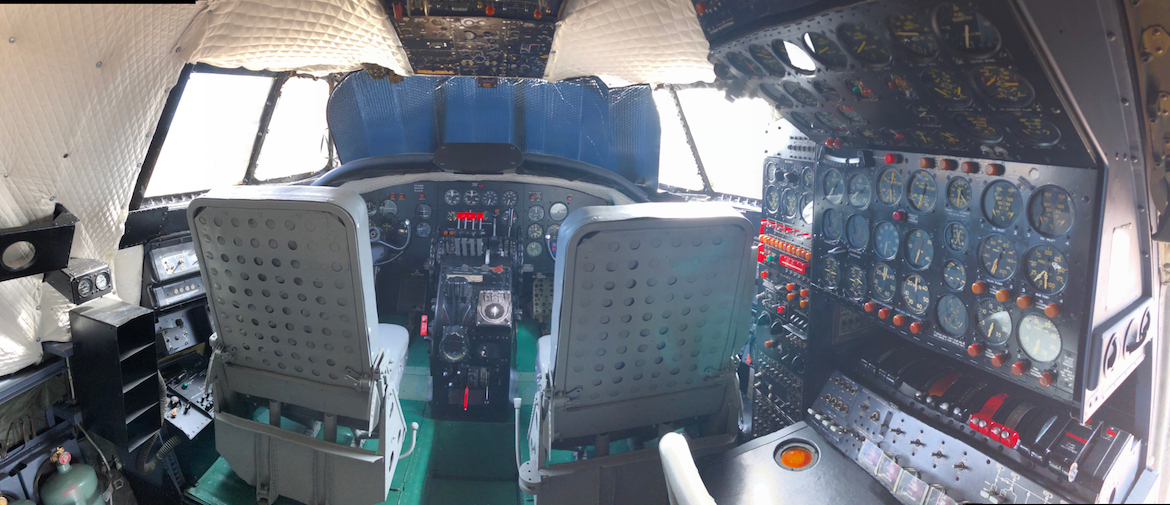
The Qantas Founders Museum has reached a significant milestone on its Super Constellation project after competing the restoration of the aircraft’s cockpit.
The work was completed by four volunteers who spent a combined 700 hours over six weeks painstakingly cleaning out the cockpit, repairing broken parts of the instrument panels, adding a fresh coat of paint and removing corrosion.
Qantas Founders Museum chief executive Tony Martin thanked the volunteers for their skill, hard work and commitment in beautifully restoring the Super Constellation cockpit.
“As a not for profit organisation, Qantas Founders Museum relies on the assistance of volunteers for many of our projects and we are very indebted to the incredible work they do,” Martin said in a statement on Monday.
The project manager for the cockpit restoration Ray Boak said he was shocked when he first saw the poor state of the cockpit area.
“Besides the dirt and rubbish, the instrument panels, particularly the pilot’s ones, were in a very poor state with a large number of missing indicators and some very rough modifications that had been carried out to fit later era radio and navigation equipment, which had been removed at some stage, leaving gaping holes in the panels,” Boak said in a column on the Qantas Founders Museum website.
“Even in this state I could imagine how great the cockpit must have looked originally and the more I thought about it the more I thought I would like to see the cockpit in a better state.”


Boak worked on the project with fellow volunteers Bob Sidgwick, Garry Murphy, John Booth.
“While the cockpit of any aircraft is a small area there is a great deal of detail within it so to end up being able to bring VH-EAM’s cockpit back to life gave us all an enormous amount of satisfaction which could not have been done without the ongoing dedication of both the museum staff and the volunteers,” Boak said.

The Qantas Founders Museum purchased the Lockheed Super Constellation, which had been grounded for 25 years, at an auction of old aircraft organised by the Manila International Airport Authority in September 2014.
The Super Constellation was previously operated by World Fish and Agriculture Inc to transport fish cargo and the United States Air Force. It was similar to those flown by Qantas in the 1940s and 1950s.
Since being purchased, the aircraft, N4247X, has been raised out of the mud, had its engines/propellers, tails, wings and landing gear removed and made safe for moving.
It was transported to Australia in 2017, first on a ship from Manilla and then by road from Townsville to the home of the museum in Longreach.
The external restoration was fully complete in July 2018. The aircraft has been painted in what the museum described as “Qantas Super Constellation” livery featuring the name Southern Spray on the nose, a red cheatline along the passenger windows and the word Qantas on the fuselage.
Meanwhile, the Australian flag, a Flying Kangaroo and registration VH-EAM are on the tailplane.

HIGHLIGHTS OF THE CONSTELLATION IN QANTAS COLOURS
- Constellations operated Qantas’s Kangaroo route air services between London and Sydney from 1947
- The Constellation was the first Qantas aircraft to feature flight hostesses, and the first pressurised aircraft operated by Qantas.
- The Super Constellation operated the first Qantas trans-Pacific air service in 1954
- The Super Constellations in Qantas colours operated first ever regular round-the-world air services via both hemispheres in 1958
(Source: Qantas Founders Museum)
VIDEO: Volunteer John Booth talks about his work restoring the instrument panels in a video from the Qantas Founders Museum YouTube channel.











